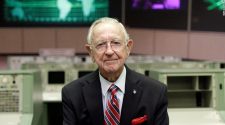The state has become much more than a major player in agriculture and the oil and gas industries, emcee and Mind Shift President Josh Teigen said, as political and industry leaders concentrate on “building North Dakota as a technology hub.”
More than 300 people filled the Avalon Event Center auditorium Wednesday, Aug. 14, taking in presentations from experts in cybersecurity, telecommunications, biotechnology, advanced coatings, health care, heavy equipment manufacturing and autonomous farming.
RELATED:
“Our state’s growing technology sector is not only creating good jobs, but it is helping to advance our state’s top economic industries, like agriculture,” said Sen. John Hoeven, R-N.D. “In order to further support this convergence of technology and agriculture, we’ve worked hard to secure funding for rural broadband and to grow our state’s UAS (unmanned aerial systems) capabilities. These technological advancements will help ensure our farmers remain competitive on the global scale.”
Hoeven, who co-sponsored this ninth tech expo with the Fargo Moorhead West Fargo Chamber of Commerce, said technology “is the third wave of economic opportunity” for North Dakota, and it creates a solid, three-legged foundation for the state’s economy looking toward the future.
“We are absolutely a world leader in agriculture. We’re absolutely a world leader in energy, and now technology ties those three together. Those are the three legs on the stool,” he said. “It’s creating incredible businesses and incredible opportunities for these amazing young people and great minds.”
Barry Batcheller, chairman of the board of Appareo, and Greg Tehven, executive director of Emerging Prairie, talked about the importance of North Dakota’s Grand Farm autonomous farming research initiative, in the works in Horace.
The initiative will use robotics and artificial intelligence to address the growing shortage of farm labor while providing food for a rapidly world population.
Batcheller said the world’s population is expected to hit 9 billion by 2050, about 2 billion more people than are here today.
“We believe we have an opportunity, an obligation” to show a path to ways of providing food to a growing population, Batcheller said.
To do that, he said farms will have to have the bandwidth and connectivity to communicate with satellites to control autonomous equipment. Farms may gather their own energy, perhaps through solar roof panels, and telemedicine and tele-education will help keep people in rural areas healthy and educated.
“Our intention is to build a real physical farmstead … and to populate it with advanced technology” within the next 10 years, Batcheller said.
“We believe this project is real,” Tehven said. “We have a chance to win.”
Beyond the speakers, several entities received awards for their efforts from the Technology Council of North Dakota, which represents more than 65 businesses, schools and other institutions.
- The Premier Technology Business Award was given to goes to Bushel, formerly Myriad Mobile. The company developed an automated mobile app platform which helps grain elevators and farmers interact more efficiently.
- The Technology Innovator Award was given to WEX Health, which instituted a self-service portal which 300,000 employers use in helping more than 25 million employees.
- The North Dakota Technology Champion Award went to John J. Simmons, chairman of Carbontec Energy Corp. Simmons and his Bismarck-based firm have developed more environmentally friendly ways to produce steel and to clean up oil spills.
Dana Peterson, policy advisor for the U.S. Department of Agriculture, speaks at the 2019 State of Technology hosted by The Chamber on Wednesday, Aug. 14, at the Avalon Events Center, Fargo.
Michael Vosburg / Forum Photo Editor
Dana Peterson, policy advisor for research education and extension for the U.S. Department of Agriculture, says internet connectivity is key to prosperity in farming country.
There’s a challenge “to connect every single acre. That’s a big, big job,” Peterson said, and the federal government plans to spend billions of dollars to make it happen.
She said it will be important to use machine learning and artificial intelligence to “get to the next level” in agriculture.
She added that Fargo-based Dakota Carrier Network’s work to use its fiber-optic infrastructure to enhance communication in rural areas is “phenomenal.”
Joseph Van Valen, of the White House Office of Science and Technology, speaks at the 2019 State of Technology hosted by The Chamber on Wednesday, Aug. 14, at the Avalon Events Center, Fargo.
Michael Vosburg / Forum Photo Editor
Joseph Van Valen, a fellow in the White House Office of Science and Technology Policy, said he believes three technologies will change our world: drones, supersonic aircraft for civilian use, and automated vehicles.
Over 900,000 drones have been registered since 2015, while registered aircraft has remained steady for decades at 220,000.
“It’s new, exciting, it’s growing, and it’s the future,” Van Valen said of drone usage.
The challenge is to integrate drones into airspace to be safe, efficient and not disruptive to commercial air applications, something that North Dakota is playing a key part in doing.
“Thank you, North Dakota, for leading the way. You are truly making a nationwide impact,” Van Valen said.
Another technology area with the potential “to significantly alter our way of life” is automated vehicles,” he said. But they will be tougher to regulate than drones, because vehicles and drivers are regulated by multiple levels of government and agencies. Supersonic civilian aircraft could also revolutionize an industry that has seen speed of travel remain roughly at 1960s levels. However, that speed must come without the noise and other problems that came with aircraft like the Concorde, which is no longer flying, he said.
















